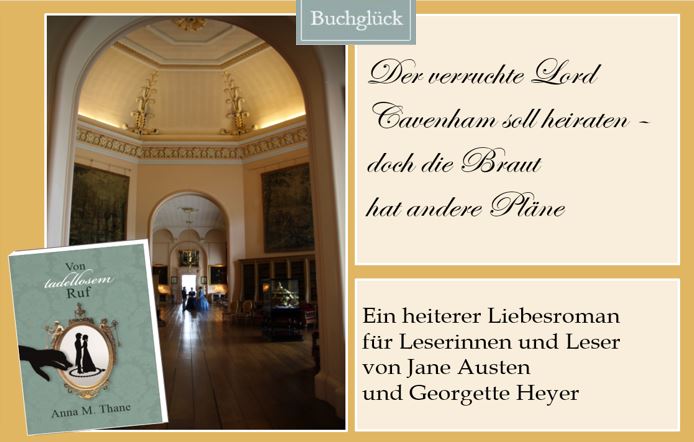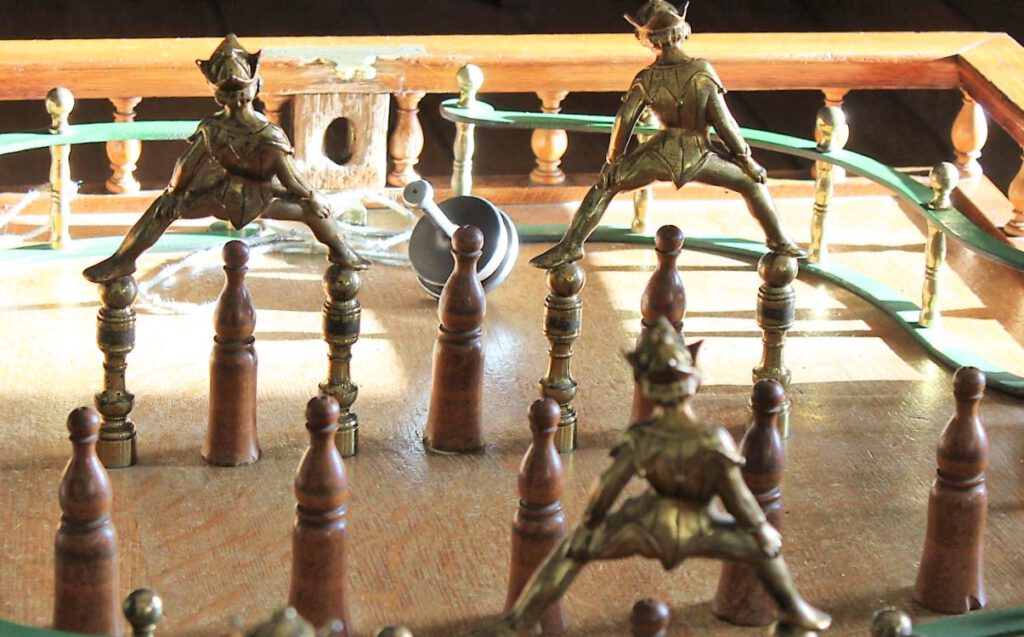
Playing with a top and skittles was popular in the 18th century. Children and grown-ups alike tested their skills at a game called “The devil among the tailors”. The 18th-century game is different from today’s version that is still around in some pubs in Britain. It is much larger, and you need more skills to score points. How was it played? And what’s in a name?
How to play “The devil among the tailors”
The game is played on a large wooden board. The board is divided in small rooms. In each room several skittles are positioned on markers. On each marker a number is written, indicating a score (this can also be negative). A top is sent spinning from one end of the table. The idea is to topple as many of the skittles as possible. Each skittle scores – or deducts – the numbers of points given on the marker. The players spin the top alternately. The points of the knocked skittles are added up. The highest score wins.
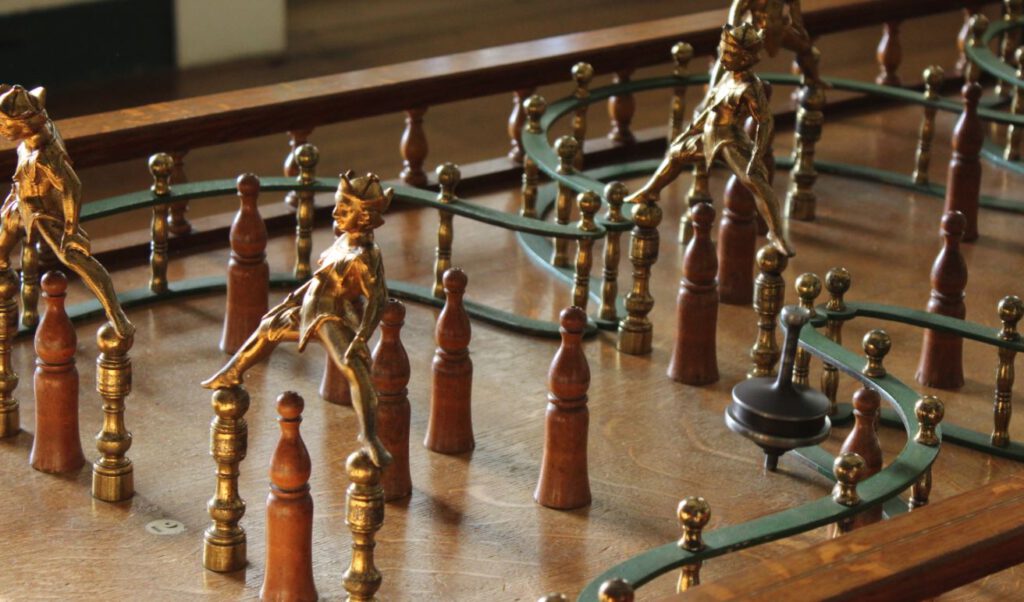
What’s in a name
Some sources suggest that the game “The devil among the tailors” is named after a riot in 1805, when hundreds of tailors protested against the performance of a play mocking their profession (“The Tailors: A Tragedy for Warm Weather“). The riot seemed to get out of hand, so that the Life Guards were called. The troops came among the protesters in a way that was likened to a skittle ball ploughing through skittles.
However, it is not likely that the riot gave a name to the game. Joseph Strutt describes the game in his book “Sports and Pastimes of the English people”, published in 1801 (four year prior to the riot), and gives its name as “Devil among the tailors”.
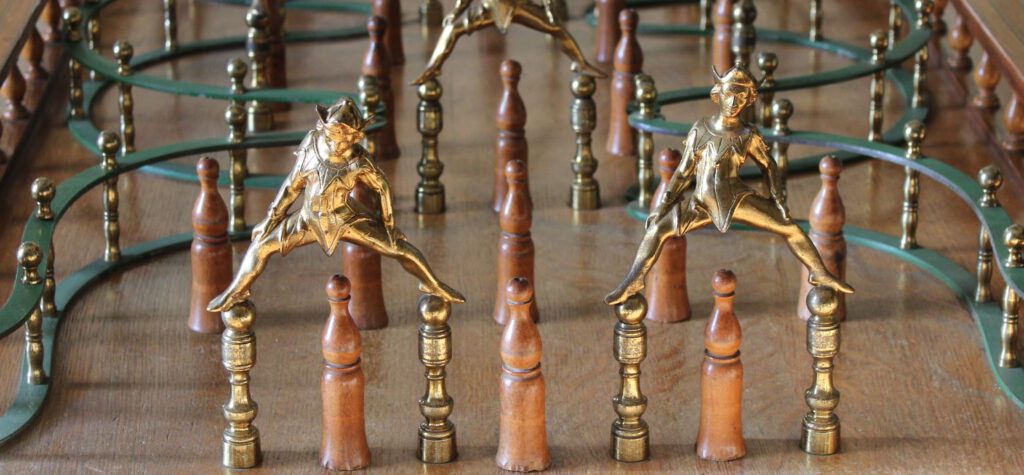
We can only guess where the name comes from. Generally, it must be said that the profession of the tailor was often mocked in the 18th century, as tailoring was regarded as ‘unmanly’ or ‘women’s work’. Additionally, the tailor himself was seen as grasping for money – without doubt men of fashion often were in debt to the men bringing them out in latest fashion, and disliked it immensely when a tailor sent them dunning letters. Unfortunate, the 18th century was an age with strong bias against foreigners, so that the prejudice against tailors was also fuelled by the circumstance that many of them were French or Jews. It is thus possible that the game’s name is an ugly slight against a sneered at profession. Another prejudiced name for the game was “Devil amongst the tinkers”. Much more harmless, the game was known in France as “table à toupie” (table with top) or “Jeu de Roi” (Game of the King).
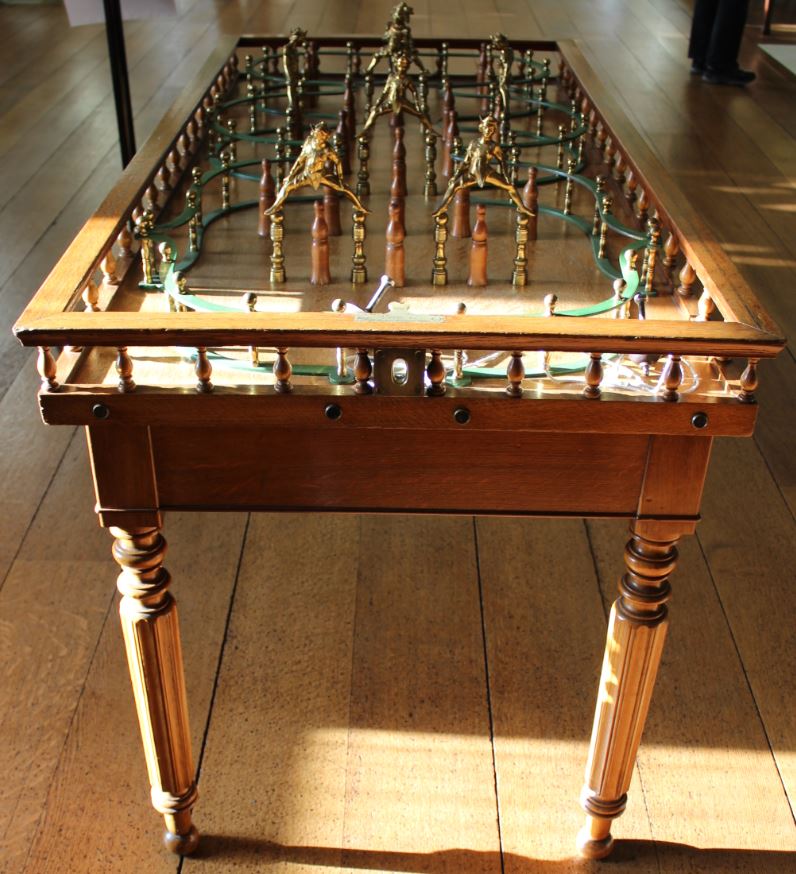
Though Joseph Strutt was not fond of the game, calling it a “childish pastime”, and assigning it to “low public-houses, where many idle people resort and play at it for beer and trifling stakes of money”, “Devil among the tailors” was not limited to public houses. It had fans in higher circles, too. The elaborate version of the game (above) is on display at Osterley Park, London, UK.
Related articles
Sources
Joseph Strutt: The sports and pastimes of the people of England. From the earliest period, including the rural and domestic recreations, May games, mummeries, pageants, processions and pompous spectacles, 1801; https://archive.org/details/sportspastimesof00struuoft
“Today in London theatrical history, 1805: tailors offended at anti-tailor play riot, Haymarket Theatre” by Past Tense, at: https://pasttenseblog.wordpress.com/tag/theatre/
https://en.wikipedia.org/wiki/Devil_among_the_tailorshttps://www.tradgames.org.uk/games/Table-Skittles.htm
Article by Anna M. Thane, author of the novel
“Von tadellosem Ruf” (http://amzn.to/2TXvrez)
